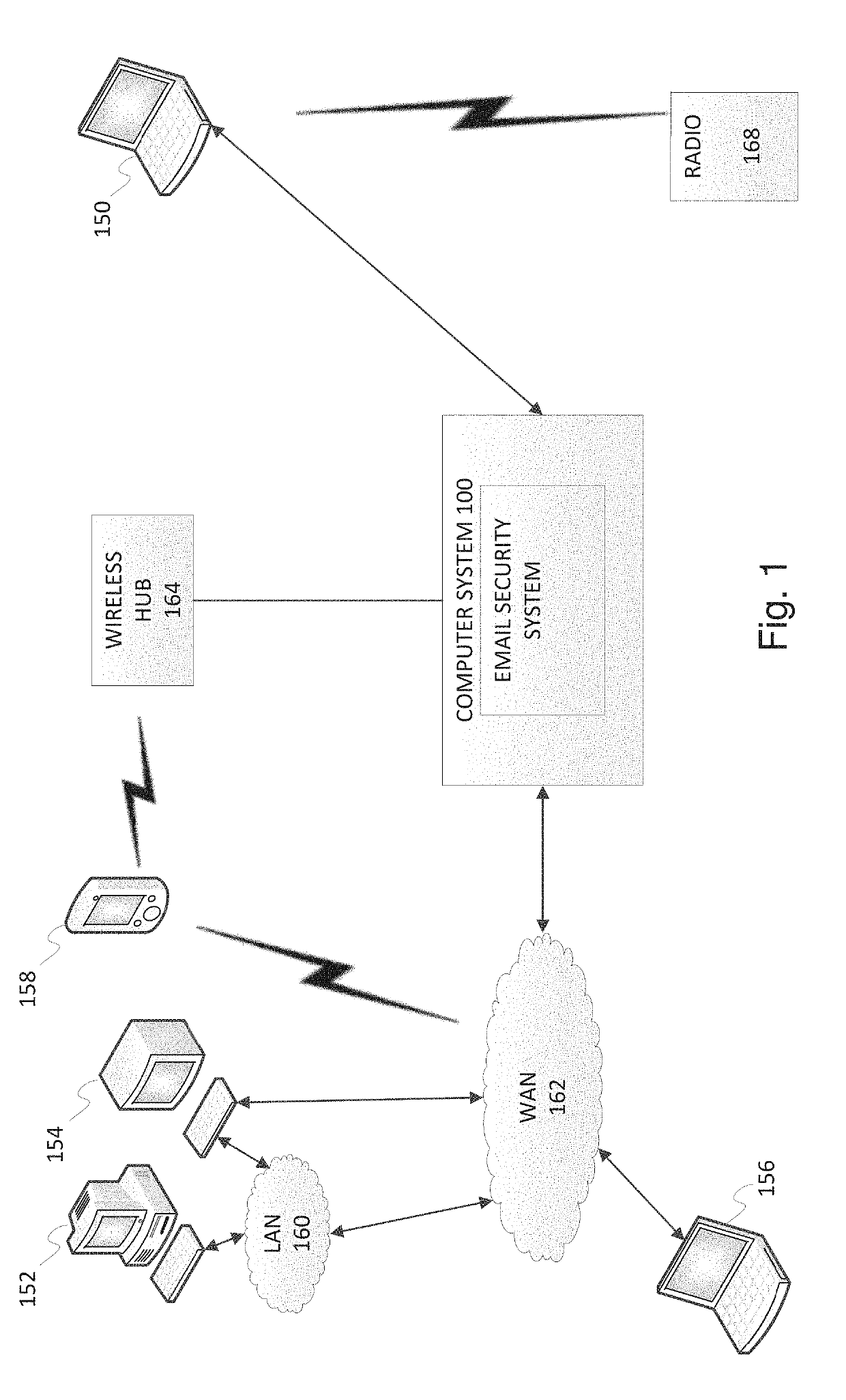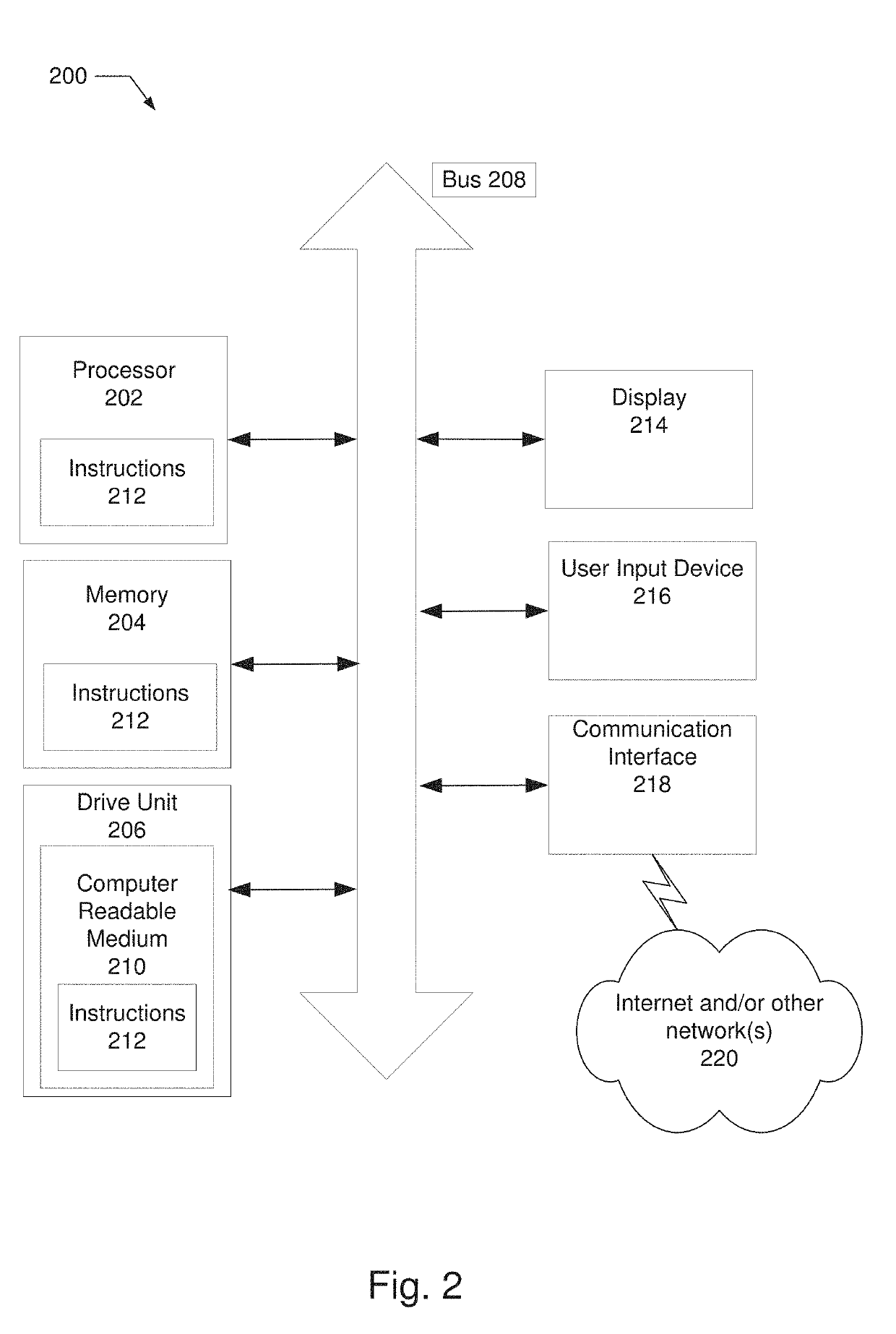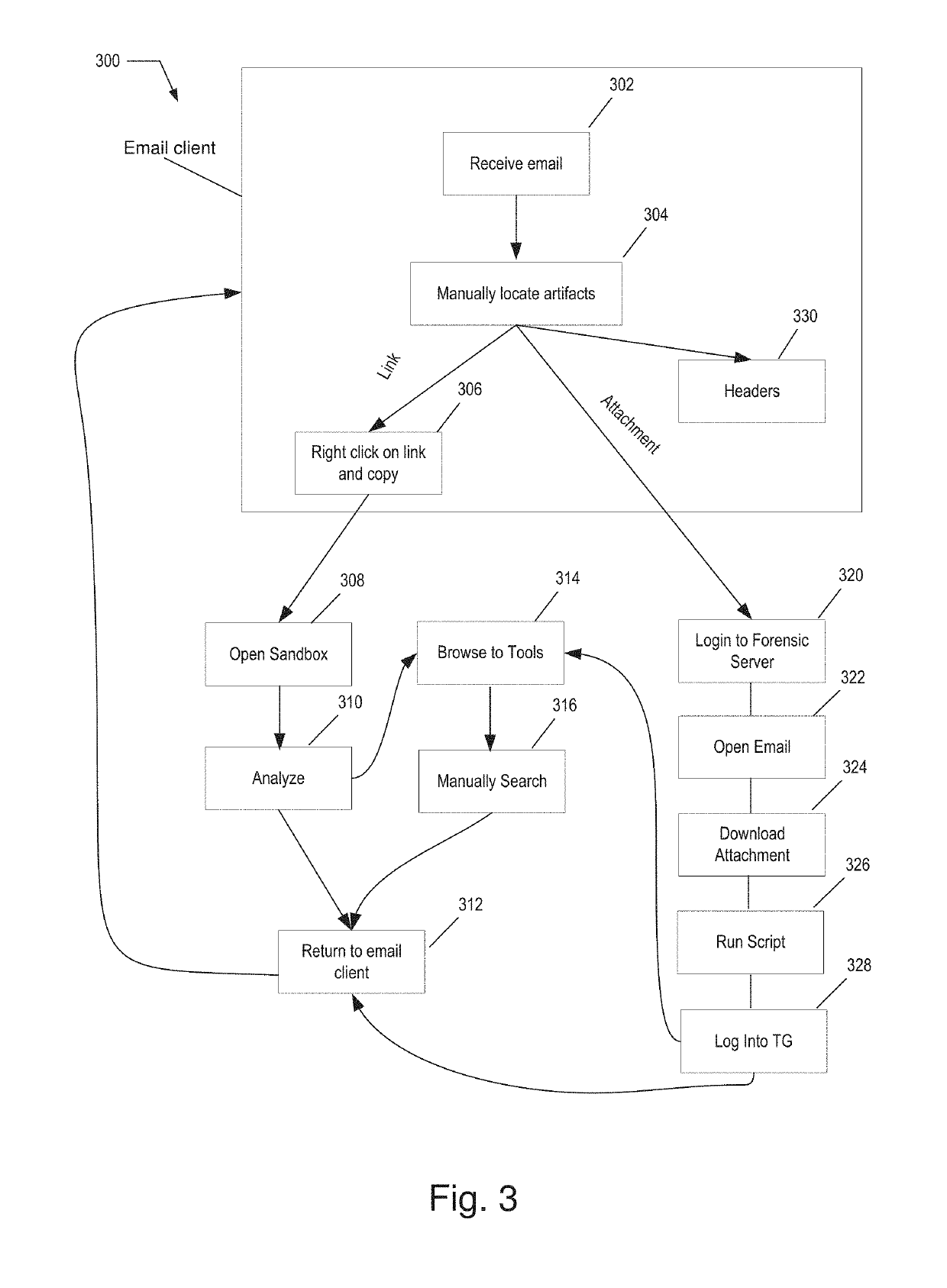Electronic mail security system
a security system and electronic mail technology, applied in the field of electronic mail security system, can solve the problems of difficult to distinguish malicious from non-malicious artifacts, inability or helpful to simply block all artifacts from all email messages, and the email has become a target for spreading malicious software (malware)
- Summary
- Abstract
- Description
- Claims
- Application Information
AI Technical Summary
Benefits of technology
Problems solved by technology
Method used
Image
Examples
Embodiment Construction
[0014]The disclosed systems and methods generally enable an administrator to safely examine email messages, including their contents, and in particular, to identify, but disable execution of, potentially malicious artifacts (e.g., Internet links, attachments, macros, headers) in an email message, and easily and conveniently investigate / handle each artifact. The disclosed email security system acts as an intermediary between an administrator user and an email message and modifies how an administrator interacts with the email message and manages how the email message may interact with the computer executing the disclosed email security system and its software, e.g., the system causes interactions with email messages to be manipulated to yield a desired result, namely, that all of the artifacts in an email message that could be malware are identified but disabled, and are further associated with a payload button for investigating the artifact. The email security system overrides the ro...
PUM
 Login to View More
Login to View More Abstract
Description
Claims
Application Information
 Login to View More
Login to View More - R&D
- Intellectual Property
- Life Sciences
- Materials
- Tech Scout
- Unparalleled Data Quality
- Higher Quality Content
- 60% Fewer Hallucinations
Browse by: Latest US Patents, China's latest patents, Technical Efficacy Thesaurus, Application Domain, Technology Topic, Popular Technical Reports.
© 2025 PatSnap. All rights reserved.Legal|Privacy policy|Modern Slavery Act Transparency Statement|Sitemap|About US| Contact US: help@patsnap.com



